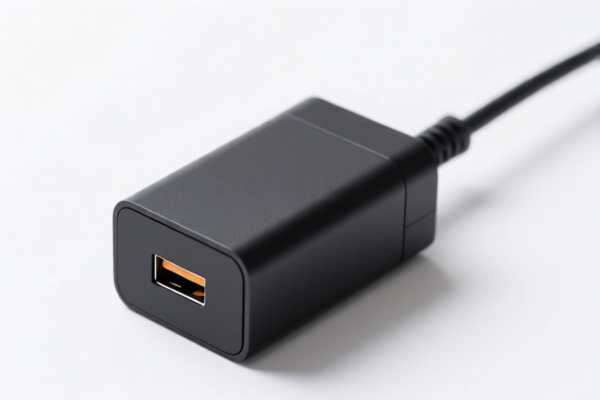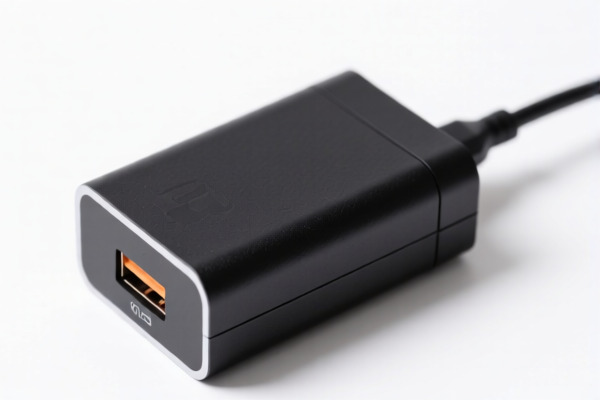| HS Code | Official Doc | Tariff Rate | Origin | Destination | Effective Date |
|---|---|---|---|---|---|
| 8548000000 | Doc | 55.0% | CN | US | 2025-05-12 |
| 9620001000 | Doc | 57.0% | CN | US | 2025-05-12 |
| 9620003090 | Doc | The rate applicable to the article of which it is an accessory+30.0% | CN | US | 2025-05-12 |
| 9609908000 | Doc | 37.5% | CN | US | 2025-05-12 |
| 8007005000 | Doc | 57.8% | CN | US | 2025-05-12 |
| 8007001050 | Doc | 57.1% | CN | US | 2025-05-12 |
| 3901909000 | Doc | 61.5% | CN | US | 2025-05-12 |
| 3901905501 | Doc | 61.5% | CN | US | 2025-05-12 |
| 3914006000 | Doc | 58.9% | CN | US | 2025-05-12 |




Adapter
An adapter is a device that connects two different electrical or electronic components, or systems, allowing them to communicate. It serves as a bridge between interfaces that would otherwise be incompatible.
Material:
Adapters are constructed from a variety of materials depending on their specific function and the power/data they handle. Common materials include:
- Plastics: Often used for the adapter housing, providing insulation and structural support. Common types include ABS, Polycarbonate, and PVC.
- Metals: Used for connectors, internal wiring, and shielding. Common metals include Copper (for conductivity), Brass (for connectors), and Steel (for structural components and shielding). Gold plating is frequently used on connectors to improve conductivity and corrosion resistance.
- Semiconductors: Integrated circuits (ICs) are often used in more complex adapters to perform signal conversion or processing.
- Ferrite cores: Used in some adapters to reduce electromagnetic interference (EMI).
Purpose:
The primary purpose of an adapter is to enable compatibility between devices with differing standards or connection types. This avoids the need for replacing existing equipment.
Function:
Adapters function by:
- Physical Interface Conversion: Adapting the shape or configuration of connectors. (e.g., USB-A to USB-C)
- Electrical Signal Conversion: Modifying voltage levels, current, or signal types. (e.g., AC to DC power adapters)
- Data Protocol Conversion: Translating data formats between different communication protocols. (e.g., Ethernet to USB adapters)
- Impedance Matching: Ensuring optimal signal transfer between devices with differing impedance characteristics.
Usage Scenarios:
- Power Adapters: Converting AC mains power to the DC voltage required by electronic devices (laptops, smartphones, etc.).
- Data Transfer Adapters: Connecting devices with different data ports (USB to Ethernet, USB-C to HDMI, SD card to USB).
- Audio Adapters: Connecting audio devices with different connectors (3.5mm to USB, RCA to HDMI).
- Networking Adapters: Connecting devices to a network using different protocols (Ethernet to Wi-Fi).
- Mount Adapters: Connecting lenses to different camera bodies.
Common Types:
- AC/DC Adapters (Power Adapters): Convert alternating current (AC) from a wall outlet to direct current (DC) for powering electronic devices. These are often categorized by voltage and current output.
- USB Adapters: A wide range of adapters for different USB standards (USB-A, USB-B, USB-C, Micro-USB, Mini-USB) enabling compatibility between various devices.
- Network Adapters:
- Ethernet Adapters: Connect devices to an Ethernet network.
- Wi-Fi Adapters: Connect devices to a Wi-Fi network.
- USB to Ethernet Adapters: Enable devices without an Ethernet port to connect to a wired network.
- Video Adapters:
- HDMI Adapters: Connect devices with HDMI ports.
- DisplayPort Adapters: Connect devices with DisplayPort ports.
- USB to HDMI Adapters: Enable devices without an HDMI port to connect to a display.
- Audio Adapters: Convert between different audio connectors (3.5mm, RCA, USB).
- Mount Adapters: Used in photography to connect lenses with different bayonet mounts to camera bodies.
Based on the provided information, determining the precise HS code for "adapter adapter" requires further clarification regarding its material, function, and application. However, based on potential interpretations, the following HS codes may be relevant:
-
8548000000: This code covers “Electrical parts of machinery or apparatus, not specified or included elsewhere in this chapter”. If the adapter is an electrical component used in machinery or apparatus and doesn’t fall under other specific classifications within the chapter, this could be applicable. The base tariff is 0.0%, with an additional tariff of 25.0% and 30.0% after April 2, 2025, resulting in a total tariff of 55.0%.
-
9620001000: This code covers “Monopods, bipods, tripods and similar articles: Accessories suitable for use solely or principally with the apparatus of heading 8519 or 8521”. If the adapter is an accessory specifically designed for use with apparatus falling under headings 8519 or 8521, this code may be appropriate. The base tariff is 2.0%, with an additional tariff of 25.0% and 30.0% after April 2, 2025, resulting in a total tariff of 57.0%.
-
8007005000: This code covers “Other articles of tin: Other”. If the adapter is made of tin and doesn’t fall under other specific classifications within the heading, this code may be applicable. The base tariff is 2.8%, with an additional tariff of 25.0% and 30.0% after April 2, 2025, resulting in a total tariff of 57.8%.
-
8007001050: This code covers “Other articles of tin: Articles not elsewhere specified or included of a type used for household, table or kitchen use; toilet and sanitary wares; all the foregoing not coated or plated with precious metal Other”. If the adapter is made of tin and is used for household, table, or kitchen purposes, this code may be appropriate. The base tariff is 2.1%, with an additional tariff of 25.0% and 30.0% after April 2, 2025, resulting in a total tariff of 57.1%.
It is important to note that the final HS code determination depends on the adapter's specific characteristics, materials, and intended use.
According to the provided reference material, the HS code options related to 'adapter adapter' are limited, with only the following 4 found.
Customer Reviews
No reviews yet.